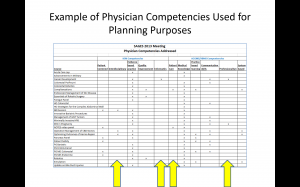Getting Started with Learner Credit Reporting in PARS: A Step-by-Step Guide for CME Providers
As a medical education consultant, I’ve worked with many CME providers who are eager to streamline their processes, support lifelong learning, and reduce administrative burden for their teams and physician learners. One of the most impactful ways to do this is by reporting individual learner credit data through the ACCME’s Program and Activity Reporting System (PARS).
Starting with a small pilot can help your organization ease into this process while learning the system. And now, with recent requirements from the American Board of Surgery (ABS), the need for learner credit reporting has become even more urgent.
Why Now? The ABS Requirement
As of 2023, the American Board of Surgery will no longer allow surgeons to self-report their CME credits. Instead, CME providers must submit credit on behalf of surgeon learners via PARS. This change makes it essential for providers who educate surgeons to begin learner credit reporting as soon as possible. If your organization provides CME to surgeons, start your pilot with this group. It will help your learners stay in compliance with Continuous Certification requirements and prevent delays in their certification and license renewal processes.
Why Start with a Pilot?
Launching a pilot allows your organization to:
- Test the Process: Learn how to navigate PARS in a low-risk setting
- Identify Barriers Early: Work through technical or administrative challenges
- Demonstrate Value: Show stakeholders how this supports learners and accreditation alignment
Step-by-Step Guide to Launching Your Pilot
- Select a Pilot Activity
- Choose a recent or upcoming CME activity with a manageable number of learners.
- Make sure the activity is already entered into PARS.
- Gather Learner Information For each learner, you’ll need:
- First and last name
- State of licensure
- License number or National Provider Identifier (NPI)
- Date of birth (month and day only)
- Date of activity completion
- Confirmation of consent to report their data (if needed)
- Choose a Reporting Method
- Manual Entry (best for small groups)
- Excel Batch Upload
- Automated Web Services Integration with your LMS
- Submit Data in PARS
- Log in to PARS, locate the activity, and upload learner data.
- Review and validate the submission.
- Evaluate and Refine
- Solicit feedback from learners and staff.
- Note technical hiccups or workflow issues and adjust accordingly.
Benefits of Learner Credit Reporting
- For Surgeons: Required for ABS Continuous Certification
- For Providers: Positions your CME program as responsive and learner-centered
- For Regulators: Improves data accuracy and simplifies license renewal processes
Helpful Resources
- ACCME State Medical Licensing Board Reporting Overview
- ACCME Learner Reporting in PARS (PDF Guide)
- Excel Batch Upload Template and Specs
Take the First Step
Getting started with a pilot is the most efficient way to build comfort and capability with learner credit reporting. And for providers serving surgeons, it’s no longer optional.
Start small and start soon!
Need help planning your pilot or selecting tools to streamline the process? Contact me if you would like assistance.
